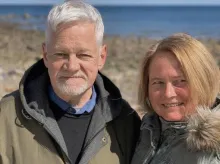
The ocean is a key natural resource for Iceland, and it is pivotal for the wellbeing of the nation that this resources is well managed. At the institute, many aspects of the marine ecosystems and resources are studied.
This includes research on:
- Sustainable management of marine resources: an integrative approach to stock identification (HSR)
- Parasites of marine fish: providing ecological insights into trophic structure and dynamics? (HSR, SC)
- The factors influencing productivity, spawning and development of fish (HSR, SC)
- Diversity and ecology of salmonids (Arctic charr and Brown trout) (AP, ZOJ)
- Changes in commercial stocks due to fishing and climate change (HSR)
- Utilization of marine and coastal habitats by birds (GÞH)
- Effects of inbreeding genetic diversity in eagles (SP, GÞH)
The biology staff are collaborating with several local and international institutes and companies on basic and applied research on marine and freshwater biology, and training of post graduate students and postdocs.
One important example is the MSc programme in Aquatic biology and fisheries, run jointly with the Marine and Freshwater research institute in Iceland.



